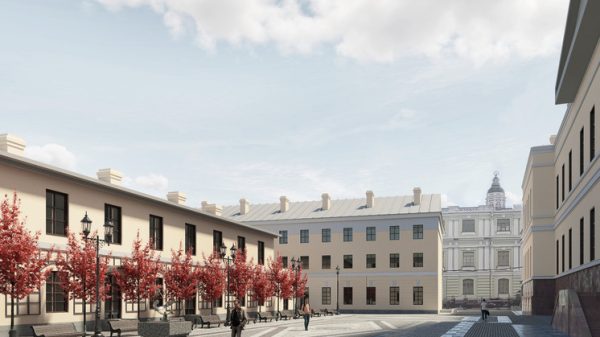Gold-plated jewelry fastened across the chest
During archaeological excavations at the former royal palace in Visegrád in northern Hungary, experts found a 700-year-old gilded silver gem that may have decorated the dress of Elizabeth of Poland, Queen Hungary, reports Magyar Nemzet.

During archaeological excavations in preparation for the development program of the Visegrád Renaissance, the oldest surviving building of the first royal palace and a unique pearl of the Angevin period were discovered.
Next to the former palace chapel of St. George at the foot of the Castle Hill stood a large mansion, which is now excavated The building was built in the form of a multi-storey tower during the time of Charles I on the site of a wooden manor from the end of the 13th century.
In the mid-1340s, several sources mention an independent mansion for the widowed Queen Mother. After the death of King Charles, the building was significantly expanded and converted into a one-story house. Later, in the second half of the 14th century, when the royal palace, which still stands, was built, the queen dowager was probably given new apartments there, and the queen's old house was converted again. It was not demolished until the end of the 14th century.
Next to it, on the courtyard level, experts using metal detection techniques found a pair of gilded cast silver garment clasps with openwork decoration.
The decoration, which is only 3.5 centimeters wide, could once decorate the dress of a noble lady. Such small and rich-looking fasteners were used in the Middle Ages to fasten the necklines of women's dresses. This fashion lasted until the 16th century, but the found item from Visegrad dates back to the first half of the 14th century.

It cannot even be ruled out that it once belonged to Queen Elizabeth of Hungary, wife of King Charles I of Hungary, since the excavated building was probably built for her.
Its dating is evidenced not only by tiny four-line letters and the characteristic shape of a hexagonal rosette, but also by the stratigraphic relationships of the place where it was found.
Archaeological excavations were carried out on behalf of the castle administration employees of the King Matthias Museum and the National Archaeological Institute of the Hungarian National Museum. As part of the Visegrad Renaissance development program, employees of the Castle Office are restoring the historical buildings of Visegrad in the original style. The most impressive element of the reconstruction will be the renovation of the citadel and the royal palace.
























































Свежие комментарии